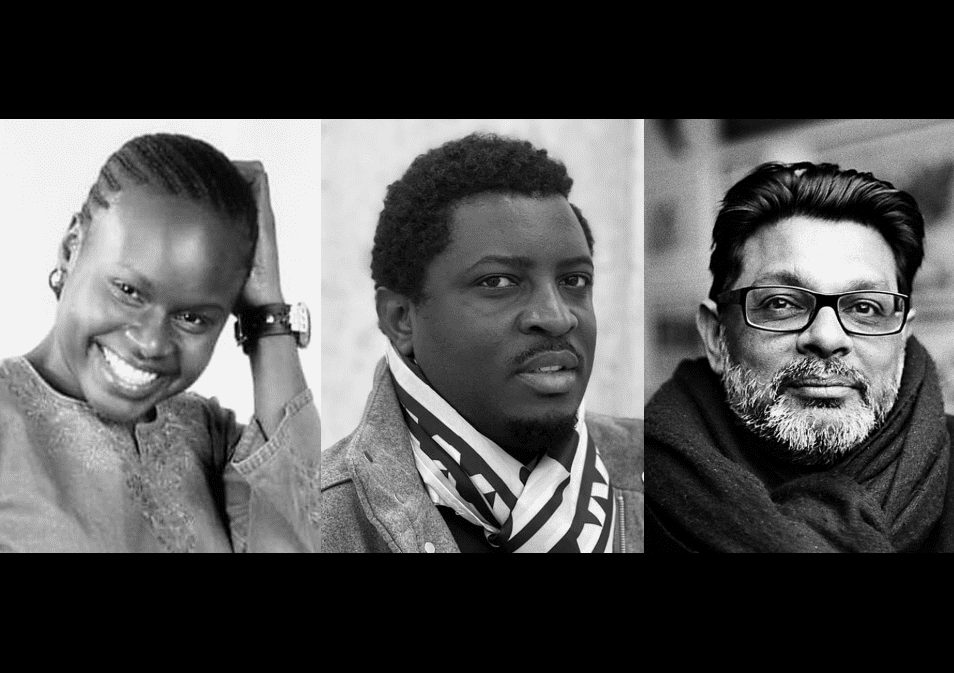Under the theme "Radiance - They Dream in Time" curator Shaheen Merali invites Acaye Kerunen and Collin Sekajugo to present their work.

Artists Acaye Kerunen and Collin Sekajugo, and curator Shaheen Merali.
For the Venice Biennale, two artists from Kampala, Uganda, Acaye Kerunen and Collin Sekajugo, present their work, in an exhibition entitled, « Radiance – They Dream in Time » at the Palazzo Palumbo Fossati. For every nation presenting in this global gathering it is a historic moment and Uganda’s inaugural pavilion at the Venice Biennale is a fertile ground in which to present the artists ideas of Kerunen and Sekajugo, for an audience to further understand the semantic intelligence of African and in this case Ugandan traditions and its modernity.
Says Shaheen Merali, curator – « Radiance – They Dream in Time” refers to the essential knowledge and lived experiences of Kerunen and Sekajugo in speaking to the many different territories of Uganda as well as to urban trade and living conditions in its urban centres. Both artists have been actively working with formal and informal archives of Uganda’s dynamic visual culture. »
Acaye Kerunen’s process as a socially engaged artist foregrounds the work of local and regional Ugandan craftswomen, celebrating them as integral collaborators and elevating the artistic practices of local artisans who are the gatekeepers of their local wetlands, drawing upon a sacred and unspoken knowledge of ecological stewardship. By deconstructing utilitarian materials and artisan crafts, Kerunen repositions the work in order to tell new stories and posit new meaning. The act of re-installing these deconstructed materials is a response to the agency of women’s work in Africa and an acknowledgment of the role that this artistic labor plays in the climate ecosystem.
About Collin Sekajugo
Collin Sekajugo approaches his work from a distinct, aesthetic departure point that resides in his repeated return to pop culture and the omnipresent influence exuded by the global mainstream, conversing and critiquing its many biases across visual, oral and digital cultures. Since 2012, Sekajugo has worked with the manipulation of the common stock image to reveal its inherent biases of entitlement and privilege largely modelled on the Western self. Sekajugo’s artistic practice highlights a contemporaneous anthropological reversal of this mainstream culture through the lens of a decidedly African sense for irreverence and play on the ad-hoc. Conceptually, the works of Sekajugo become pure theatre, a hacking of identity that exposes some truths behind these stock images that quietly continue to colonise the entire globe by the weight of their own popularity.
More Editorial